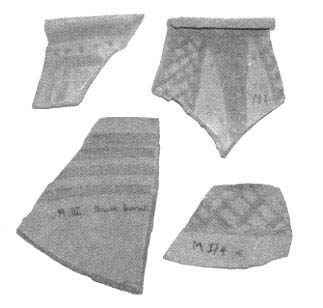Image Details

Bryant Wood
Cypriot bichrome ware—pottery decorated in two colors. Now known as a key indicator of Late Bronze Age occupation, this pottery, excavated by Garstang at Jericho, is just what Kenyon later looked for, unsuccessfully. These sherds were found on the east side of the tell, apparently having slid there when a large structure upslope eroded. In Garstang’s day, the significance of such bichrome ware was not yet appreciated, and he failed to single it out from the other pottery types he uncovered. As fate would have it, Kenyon, who well knew the link of such ware to the Late Bronze Age, conducted her dig too far north of the eroded runoff to find any bichrome ware. Had she dug further south, or had she been aware of Garstang’s finds, the debate over the date of Jericho’s fall could have taken a very different course: Kenyon might have dated Jericho’s demise to about 1400 B.C.E., (as Garstang did) and not to about 1550 B.C.E., the end of the Middle Bronze Age. Why Kenyon did not study Garstang’s finds more closely remains a mystery.
